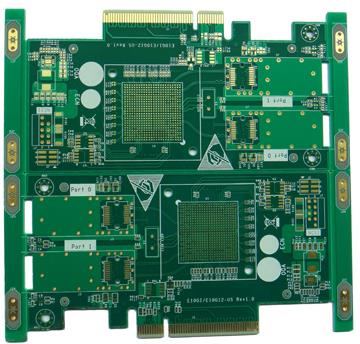Multilayer circuit boards are usually defined as 10-20 or more advanced multilayer circuit boards, which are more difficult to process than traditional multilayer circuit boards and require high quality and reliability. Mainly used in communication equipment, high-end servers, medical electronics, aviation, industrial control, military and other fields. In recent years, the market demand for multi-layer circuit boards in communications, base stations, aviation, military and other fields has remained strong.
Compared with traditional PCB products, multi-layer circuit boards have the characteristics of large thickness, large number of layers, dense lines, many through holes, large cell size, thin dielectric layers, etc., and are reliable in internal space, inter-layer alignment, impedance control and reliability. Sexual requirements are high. This article briefly describes the main processing difficulties encountered in the production of high-level circuit boards, and introduces the control points of the key production processes of multilayer circuit boards.

1. Difficulties in alignment between layers
Due to the large number of layers in multi-layer circuit boards, users have higher and higher requirements for PCB layer calibration. Generally, the alignment tolerance between the layers is controlled at 75 microns. Considering the large unit size of the multi-layer circuit board, the high temperature and humidity in the graphics conversion workshop, the overlapping of dislocations caused by the inconsistency of different core boards, and the positioning method between layers, it is more difficult to control the centering of the multi-layer circuit board.
2. Difficulties in internal circuit production
Multilayer circuit boards use special materials such as high TG, high speed, high frequency, thick copper, thin dielectric layer, etc., which puts forward high requirements for internal circuit production and pattern size control. For example, the integrity of impedance signal transmission increases the difficulty of internal circuit manufacturing.
Width and line spacing are small, open circuits and short circuits increase, short circuits increase, and the pass rate is low; there are many thin line signal layers, and the probability of inner AOI leakage detection increases; the inner core board is thin, easy to wrinkle, poor exposure, and easy to curl when the etching machine; High-rise plates are mostly system boards, with larger unit sizes and higher product scrap costs.
3. Difficulties in compression manufacturing
Many inner core boards and semi-cured boards are superimposed, and defects such as slippage, delamination, resin voids and bubble residues are prone to occur in the stamping production. In the design of the laminated structure, the heat resistance, pressure resistance, glue content and dielectric thickness of the material should be fully considered, and a reasonable multi-layer circuit board material pressing plan should be formulated.
Due to the large number of layers, the expansion and contraction control and the dimensional coefficient compensation cannot maintain consistency, and the thin interlayer insulation layer is likely to cause the interlayer reliability test to fail.
4. Difficulties in drilling drilling
The multi-layer circuit board adopts special plates of high TG, high speed, high frequency and thick copper, which increases the difficulty of drilling roughness, drilling burrs and de-drilling dirt. There are many layers, the cumulative total copper thickness and the plate thickness, the drilling is easy to break the knife; the dense BGA is many, the CAF failure problem caused by the narrow hole wall spacing; the plate thickness is easy to cause the inclined drilling problem.